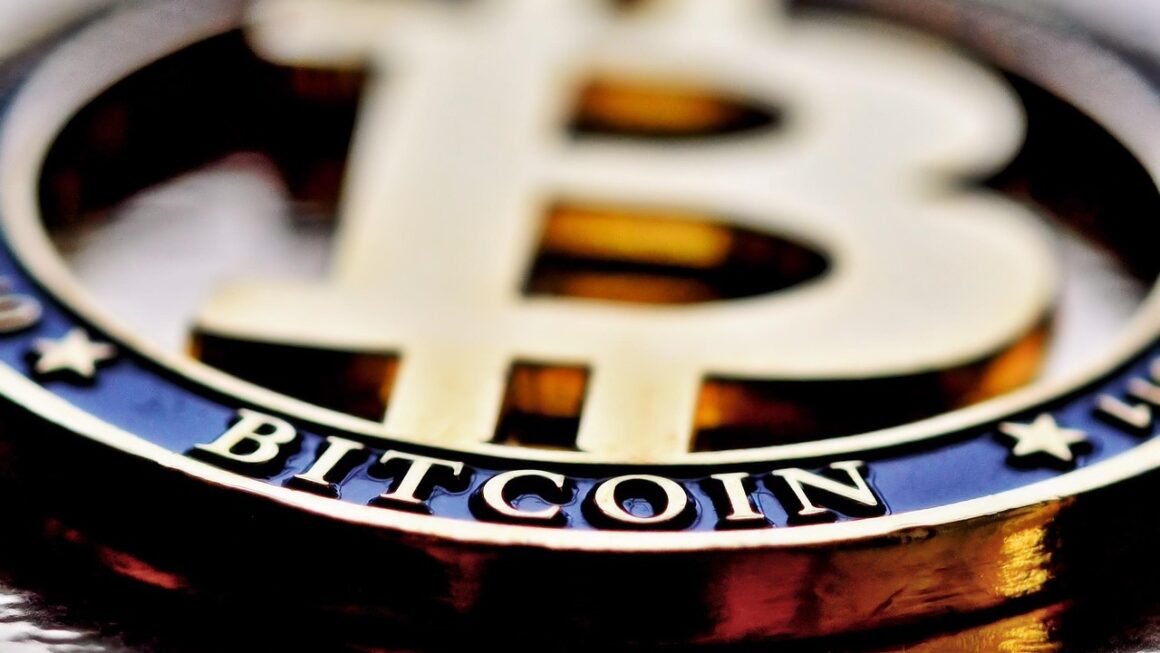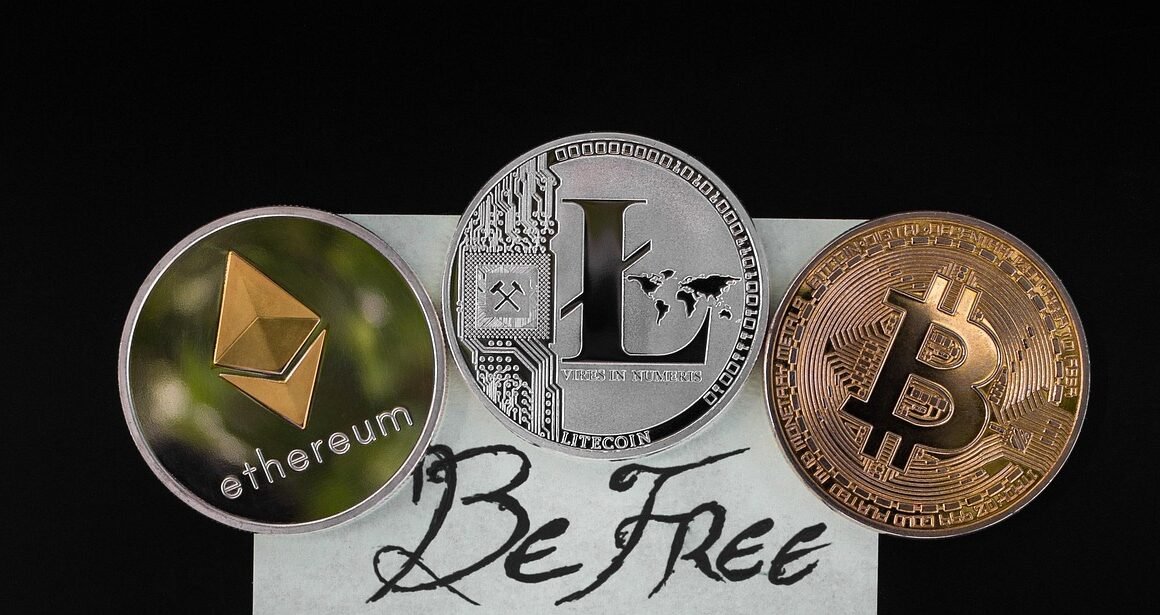Stablecoins have emerged as a cornerstone of the cryptocurrency landscape, offering a unique blend of the digital world’s flexibility and the traditional financial system’s stability. Unlike volatile cryptocurrencies like Bitcoin and Ethereum, stablecoins aim to maintain a steady value, typically pegged to a reserve asset like the US dollar. This makes them a popular choice for traders, investors, and everyday users looking for a more predictable and reliable digital currency. This blog post will delve into the world of stablecoins, exploring their mechanics, benefits, risks, and real-world applications.
Understanding Stablecoins
What are Stablecoins?
Stablecoins are cryptocurrencies designed to minimize price volatility. This is achieved by linking their value to a more stable asset, such as:
- Fiat Currencies: The most common type, pegged to a national currency like the US dollar (USD), Euro (EUR), or Japanese Yen (JPY).
- Commodities: Linked to the price of precious metals like gold or silver.
- Other Cryptocurrencies: Backed by a basket of other cryptocurrencies, providing diversification.
- Algorithmic Mechanisms: Rely on algorithms to adjust the coin’s supply based on demand, aiming to maintain a stable price without direct asset backing.
The primary goal of a stablecoin is to provide the benefits of blockchain technology – such as faster and cheaper transactions – without the extreme price fluctuations associated with other cryptocurrencies. This makes them ideal for various use cases, including payments, trading, and lending.
How do Stablecoins Work?
The mechanism by which a stablecoin maintains its peg varies depending on its type:
- Fiat-Backed Stablecoins: These stablecoins hold a reserve of fiat currency (e.g., USD) equivalent to the number of stablecoins in circulation. For every stablecoin issued, a corresponding amount of fiat is held in a bank account or with a custodian. Companies like Tether (USDT) and Circle (USDC) are examples of fiat-backed stablecoins. Ideally, these reserves are audited regularly to ensure transparency and maintain trust.
- Commodity-Backed Stablecoins: Similar to fiat-backed stablecoins, these hold a reserve of a physical commodity, like gold. For example, PAX Gold (PAXG) is backed by physical gold reserves held in vaults. Each PAXG token represents one fine troy ounce of gold held in custody.
- Crypto-Collateralized Stablecoins: These use other cryptocurrencies as collateral. Since cryptocurrency values are volatile, these stablecoins are typically over-collateralized, meaning that the value of the collateral exceeds the value of the stablecoins issued. MakerDAO’s DAI is a popular example. Users lock up ETH (or other cryptocurrencies) in a smart contract and receive DAI in return. The collateralization ratio is monitored and adjusted to maintain the DAI’s peg.
- Algorithmic Stablecoins: These stablecoins use algorithms to control the supply and demand, aiming to maintain a stable price. If the price falls below the target peg, the algorithm reduces the supply; if the price rises above the target, the algorithm increases the supply. Algorithmic stablecoins are often considered riskier due to their reliance on complex algorithms and market dynamics. Many have failed to maintain their peg effectively. An example of a failed algorithmic stablecoin is TerraUSD (UST).
Benefits of Using Stablecoins
Stability and Predictability
The most significant advantage of stablecoins is their price stability, making them suitable for:
- Payments: Merchants can accept stablecoins without worrying about significant price fluctuations between the time of the transaction and when they convert the digital currency into fiat.
- Remittances: Stablecoins can be used to send money internationally quickly and cheaply, without the volatility associated with other cryptocurrencies.
- Trading: Traders can use stablecoins as a safe haven asset to store value during periods of market volatility, without exiting the cryptocurrency ecosystem entirely.
- Accounting and Financial Reporting: Businesses can use stablecoins for more predictable financial planning and reporting.
Efficiency and Accessibility
Stablecoins offer numerous benefits related to efficiency and accessibility:
- Faster Transactions: Stablecoin transactions are typically faster and cheaper than traditional wire transfers, especially for cross-border payments.
- 24/7 Availability: Cryptocurrency markets operate 24/7, allowing users to transact at any time, unlike traditional banking hours.
- Global Accessibility: Stablecoins are accessible to anyone with an internet connection, regardless of their location or banking status. This is particularly beneficial for individuals in countries with unstable currencies or limited access to financial services.
- Lower Transaction Fees: Generally, stablecoin transaction fees on many blockchain networks are significantly lower than those charged by traditional financial institutions for international transfers.
Integration with DeFi
Stablecoins are a crucial component of the Decentralized Finance (DeFi) ecosystem:
- Lending and Borrowing: Stablecoins are commonly used as collateral in DeFi lending platforms, allowing users to earn interest on their holdings or borrow against their assets.
- Yield Farming: Stablecoins are used in yield farming strategies to provide liquidity to decentralized exchanges and earn rewards.
- Decentralized Exchanges (DEXs): Stablecoins serve as a base currency for trading pairs on DEXs, providing liquidity and facilitating trading activity.
- Stable Value for Smart Contracts: Stablecoins provide a stable medium of exchange and store of value for smart contracts, enabling more complex and reliable decentralized applications.
Risks and Challenges
Regulatory Uncertainty
The regulatory landscape for stablecoins is still evolving, and there is uncertainty about how governments will regulate them in the future:
- Lack of Clarity: The lack of clear regulatory frameworks in many jurisdictions creates uncertainty for stablecoin issuers and users.
- Potential for Regulation: Stricter regulations could impact the operations of stablecoin issuers and the accessibility of stablecoins for users.
- Jurisdictional Differences: Different countries may adopt different regulatory approaches, creating challenges for stablecoins that operate globally.
Counterparty Risk
Counterparty risk refers to the risk that one of the parties in a transaction will default on its contractual obligations. This is particularly relevant for stablecoins:
- Custodial Risk: Fiat-backed stablecoins rely on custodians to hold the underlying reserves. If the custodian becomes insolvent or mishandles the reserves, it could negatively impact the stablecoin’s value. It’s critical to assess the credibility and security practices of the custodian.
- Centralization: Some stablecoins are highly centralized, giving the issuer significant control over the stablecoin’s operations. This can create a single point of failure.
- Audit Transparency: It’s crucial to ensure that stablecoin issuers provide regular and transparent audits of their reserves to verify their legitimacy. Lack of transparency increases counterparty risk.
De-Pegging Events
A de-pegging event occurs when a stablecoin loses its intended peg to the underlying asset:
- Market Volatility: Extreme market conditions can lead to a temporary de-pegging, as seen with various stablecoins during periods of high volatility in the cryptocurrency market.
- Loss of Confidence: Negative news or rumors about a stablecoin issuer can erode confidence in the stablecoin, leading to a sell-off and a de-pegging.
- Algorithmic Failures: Algorithmic stablecoins are particularly susceptible to de-pegging if the algorithm fails to maintain the peg effectively. The collapse of TerraUSD (UST) serves as a stark reminder of this risk.
Algorithmic Risk
Algorithmic stablecoins rely on complex algorithms to maintain their peg, which can be vulnerable to:
- Design Flaws: The algorithm may be poorly designed or fail to account for all possible market conditions, leading to a de-pegging.
- Exploits: Hackers may be able to exploit vulnerabilities in the algorithm to manipulate the price of the stablecoin.
- Black Swan Events: Unexpected and extreme market events can overwhelm the algorithm’s ability to maintain the peg.
Examples of Popular Stablecoins
Tether (USDT)
Tether (USDT) is the most widely used stablecoin, pegged to the US dollar. It is primarily backed by fiat currency reserves. While USDT has faced scrutiny regarding the composition and auditing of its reserves, it remains a dominant player in the stablecoin market.
- Market Capitalization: Consistently holds the largest market capitalization among stablecoins.
- Use Cases: Widely used for trading, lending, and payments.
- Potential Risks: Faces regulatory scrutiny and concerns about reserve transparency.
USD Coin (USDC)
USD Coin (USDC) is another popular US dollar-pegged stablecoin, issued by Circle and Coinbase. USDC emphasizes regulatory compliance and transparency, with regular attestation reports from independent auditors.
- Transparency: Known for its commitment to transparency and regulatory compliance.
- Audits: Undergoes regular attestation reports from independent auditors.
- Institutional Adoption: Widely adopted by institutional investors and businesses.
DAI
DAI is a decentralized, crypto-collateralized stablecoin issued by MakerDAO. It is pegged to the US dollar and backed by a basket of cryptocurrencies locked in smart contracts.
- Decentralization: Operated by a decentralized autonomous organization (DAO).
- Over-Collateralization: Over-collateralized to mitigate the risk of price volatility in the underlying collateral.
- Governance: Governance is managed by MKR token holders who vote on key parameters, such as stability fees and collateral types.
Binance USD (BUSD)
Binance USD (BUSD) is a US dollar-pegged stablecoin issued by Binance in partnership with Paxos. It is fully backed by US dollar reserves held in custody by Paxos Trust Company.
- Issuer Reputation: Issued by a reputable exchange (Binance) in partnership with Paxos.
- Regulatory Compliance: Subject to regulatory oversight by the New York Department of Financial Services (NYDFS).
- Limited Supply: Due to regulatory action, BUSD minting has been halted.
Practical Tips for Using Stablecoins
Research and Due Diligence
Before using a stablecoin, conduct thorough research to understand its underlying mechanisms, risks, and potential benefits. Evaluate the issuer’s reputation, transparency, and regulatory compliance. Read independent audits and reports to verify the legitimacy of the stablecoin’s reserves.
Diversification
Don’t put all your eggs in one basket. Diversify your stablecoin holdings across multiple stablecoins to mitigate the risk of a de-pegging event or other issues with a specific stablecoin. Consider allocating your funds to stablecoins with different backing mechanisms (e.g., fiat-backed, crypto-collateralized).
Security Measures
Protect your stablecoin holdings by using strong passwords, enabling two-factor authentication, and storing your stablecoins in secure wallets. Be cautious of phishing scams and other attempts to steal your private keys.
Monitor Peg Stability
Regularly monitor the price of the stablecoins you hold to ensure they are maintaining their intended peg. Be aware of any news or events that could potentially affect the stablecoin’s stability.
Understand Regulatory Landscape
Stay informed about the regulatory landscape for stablecoins in your jurisdiction. Be aware of any potential changes in regulations that could affect the use or availability of stablecoins.
Conclusion
Stablecoins offer a compelling solution to the volatility challenges inherent in the cryptocurrency market, providing a bridge between the traditional financial world and the decentralized digital economy. While they come with their own set of risks and regulatory uncertainties, their benefits in terms of stability, efficiency, and accessibility are undeniable. By understanding the different types of stablecoins, their underlying mechanisms, and potential risks, users can make informed decisions and leverage the advantages of stablecoins for various applications, from payments and trading to DeFi participation. Continued innovation and regulatory clarity will further solidify the role of stablecoins as a key component of the future financial landscape.



